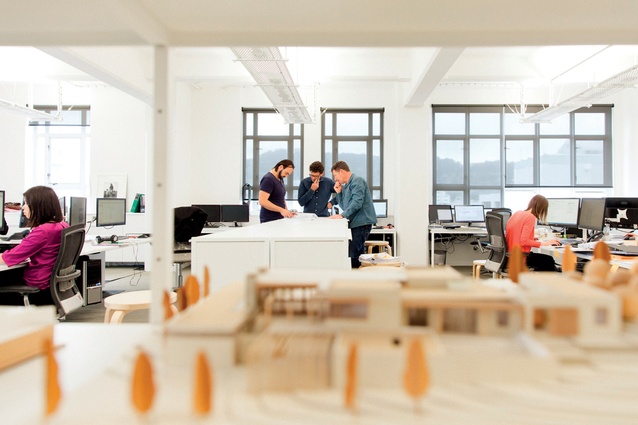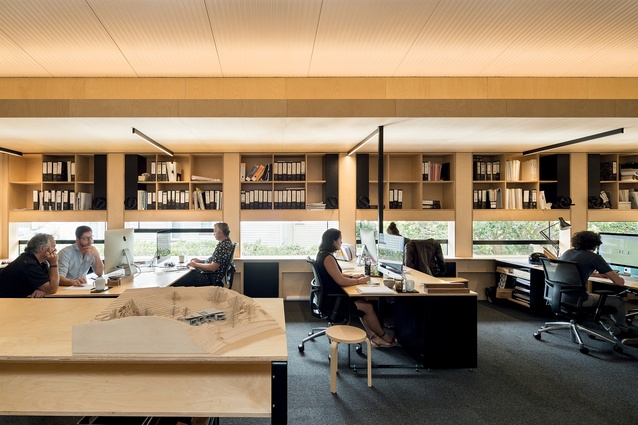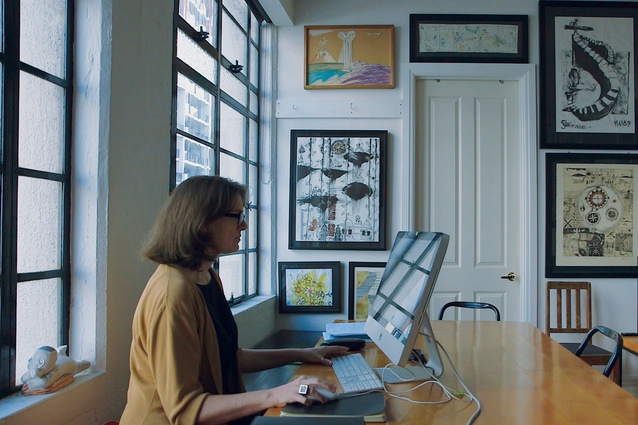Flexible working in architecture: Part one
Flexible working is one of the most significant developments to have occurred in working practices for decades. Technology now enables employees to work outside of the office remotely, using different devices and fast internet connections; however, the changing face of the workforce is also having a major effect on how companies structure their working processes. Camille Khouri and Justine Harvey explore the impacts of flexible working on some of New Zealand’s architectural firms.
Today’s workplace is radically different from that demanded by the previous generation and this reflects the composition of the workforce. According to Regus research, the workplace is now “richer in flexible working roles and more open to valuing employees on performance, rather than face-time”. Flexible working is also shown to be a key differentiator that workers consider when choosing between similar jobs and, thus, it is now an important consideration for businesses looking for talented people. Other noted benefits include improved concentration levels and productivity.
There are a number of reasons for workers’ demands for greater flexibility in the workplace. One of the key drivers is the aim to improve their quality of life, for instance, by reducing their commute to spend more time with loved ones, to pursue a sport or activity or, simply, to have more sleep. The workforce is now increasingly made up of freelance and part-time workers as well as consultants, who all require greater flexibility.
Additionally, younger workers tend to have different attitudes from those of previous generations and are keen to maintain a work–life balance, while more-mature workers are often keen to continue working part time or remotely instead of retiring for good.
Architects don’t retire
Frank Lloyd Wright condemned retirement as a ‘murderous custom’ and, famously, kept working until his death at 89. And, indeed, as life expectancy increases (in New Zealand, we can now expect to live to an average age of 81), 65 starts to feel a little early to be giving up one’s life’s work. Many employees in their 60s are choosing to continue working and, for some, retiring is something they feel the need to do progressively – both for the sake of their psyches and for financial reasons.
Architecture is a life’s passion for many architects and they often find it difficult to ‘give up their day jobs’ so they end up working on small projects for family and friends, or writing, lobbying, etc., when their official careers are over. In the future, it will, increasingly, be more common to see employees in their 60s, 70s and 80s still working part time and/or from home.
For many, like Jim Foote, a 90-year-old architect who works part time at Auckland firm Jasmax, the reasons are social and intellectual: to stay on top of the happenings of the world and to keep up with what is going on in his field. “The fact that one is mixing with younger people on a day-to-day basis is refreshing, stimulating and the complete opposite to what living in a retirement village would be like,” Foote said.1
David Sheppard, director at Christchurch practice Sheppard & Rout, is soon to retire but it “won’t be a clean break,” says co-director Jasper van der Lingen. “You can’t have one of those as an architect. You have so many contacts and jobs at different stages, there are always people who will want your advice on how to make something work. He will come in more as a consultant and there will be a lot of flexibility there. At the end of the day, there is work that has to happen but, in general, it’s becoming more and more common in the industry to work flexible hours. When I started here five years ago, people were doing it less and felt uncomfortable asking for it but, now, it is far more normal and we always find ways to accommodate individual lives.”
While now 89 years old and technically retired for more than 20 years, renowned architect Sir Miles Warren has never fully put down the pencil. He has been designing changes to his historic home at Ohinetahi to save it from destruction after the Canterbury earthquakes and transforming the grounds into a sprawling, English-style country garden, which was listed as one of New Zealand’s Gardens of International Significance in 2015.
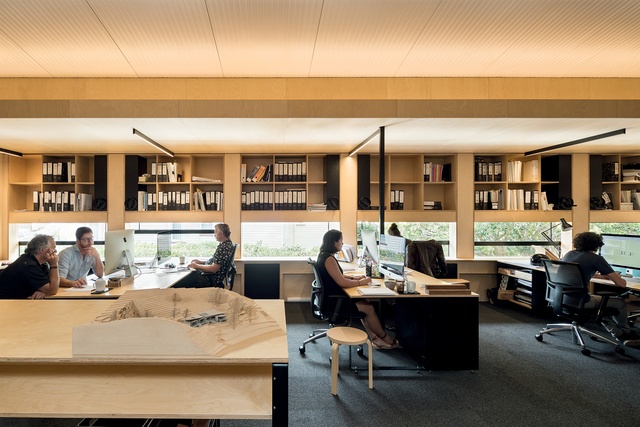
Dunedin architect Ted McCoy, who recently passed away at the grand age of 92, was still designing from home years after he was effectively retired, mainly for friends’ houses, and, in 2000, he was pleased to be ‘pulled from retirement’ for a project involving the redevelopment of the Otago Museum.
Two out of three of the directors at Dunedin practice Mason & Wales Architects have surpassed retirement age and both continue to contribute substantially to all facets of the firm’s work. Ashley Muir at 72 is beginning to taper off his hours but continues to work in the office and remotely.
In director Francis Whitaker’s opinion, “Age is not as important as experience and ability. Because architecture is an energising activity and occupation, you don’t get older in the same way – instead, you become more capable and enthused by what you do and you, therefore, continue to do it. People look at me as if I were a grey old man, but then they speak to me and they’re amazed by my enthusiasm. If you’re interested in what you do, it tends to be obvious.”
For Whitaker, there is no immediate plan to wind things up professionally, although the firm does allow for flexibility for its staff when requested. They also pay overtime on hours worked beyond the usual 9–5, which is unusual in the industry.
“People can top up their incomes when they work more. It works well on all levels as we can have people there in response to the pressures of the workload and there is no resentment for those extra hours or any feeling of exploitation. It’s about treating people well and having very clear arrangements.”
The right to change
In 2015, an amendment was made to the Employment Relations Act, allowing all employees the right to request flexible work arrangements.2 Before then, this right was restricted to those who were caring for others outside of work. According to the Ministry of Business, Innovation and Employment, the aim of this change is ‘to improve people’s participation in the labour market and to better reflect modern lifestyles’.
It is hoped that this will allow those with barriers to entering the workforce, such as solo parents, to be able to enter on flexible arrangements. Employers must respond to the request for a change in hours within one month and can refuse a request if there is good reason.
Auckland architect Natasha Markham has spoken about achieving work–life balance within her own small practice: “I certainly don’t think that I work less than I would in another firm but what I do have is flexibility, which means I’m better placed to schedule my time around my two boys. Architecture isn’t something that you clock out of at the end of the day; there’s always some idea percolating away in the back of your mind so the issue is about having the ability to determine how your time is spent.”3
For Wellington-based practice Tennent Brown Architects, it was important to find the technology that would allow the retention of a highly skilled and dedicated staff member who had become a mother and needed to work some hours from home. The practice has adopted a cloud-based server, which helps to allow for flexibility.
“Using our system, this staff member can be in the office for three days and work from home whenever she wants for an additional day,” explains director Ewan Brown. “She has done that for about eight years. It was very logical for us to make this happen; as she was so skilled and hard-working, there was no issue of trust or worry. At first, the technology didn’t help as she would take files home and work on them but there was always the risk someone else might have worked on them also, if it was a shared project. Now, she can dial in. I like pushing the technology to solve some of those problems.”
Work and productivity
According to the latest OECD Better Life Index (2012), New Zealand had the highest percentage of employees working more than 50 hours per week in the OECD, at 13.8 per cent. However, this may be changing.4
Auckland-based firm Stevens Lawson Architects implemented a four-day working week when the practice first started up back in 2002. According to director Gary Lawson, “We, generally, work ten-hour days from Monday to Thursday, with Fridays off, but, as the practice has grown, there are more people with slightly individual requirements and, because of the usual four-day week, we can also be more flexible on the Friday.”
In a different profession, Perpetual Guardian, a trust company with offices around the country, is trialling a four-day week in the hope of increasing productivity and providing a more adequate work–life balance for employees. In this model, employees might work weekends and have weekdays off but they wouldn’t be expected to work more than 32 hours per week. Meanwhile, Germany and The Netherlands already have 32-hour working weeks, with The Netherlands ranked at the top of the OECD Better Life Index for work–life balance.
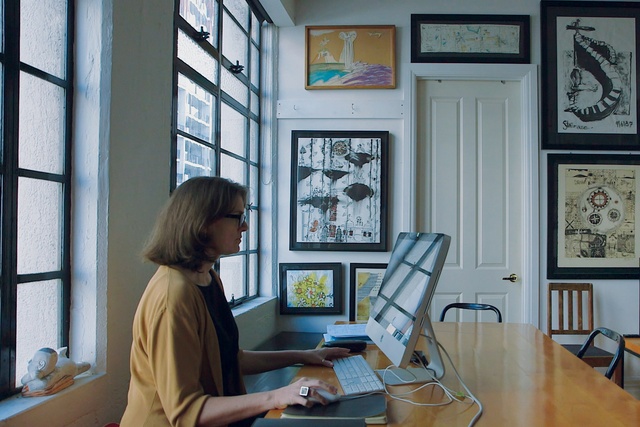
Encouraging workplace diversity
The ambition of many architectural practices to implement flexible working practices can only help to fuel an increasing desire for more diversity within the workplace. As Lynda Simmons, University of Auckland lecturer, sole practitioner and Architecture+Women.NZ (A+W.NZ) co-chair, points out: “Architectural practices are becoming more diverse because they know how much it benefits the practice, in terms of both quality of work and business. However, change is always slow and entrenched habits are hard to break, and there are still invisible barriers in place for many.”
She suggests that the positive changes being made around flexible working practices are where they are non-gendered – for example, parental and other care leave should not be tied to the female workforce as, currently, it tends to be.
“The benefits of flexible working practices are very clear and logical in theory: higher retention of staff, increases in well-being and work quality (due to ‘social exchange theory’), and reduced stress in the workplace,” says Simmons.
But are flexible workplaces fair in practice? Simmons suggests that anecdotal evidence tells us that, in many architectural workplaces, young male staff members are likely to be turned down for their requests for flexible time for care duties, and that career progression still stalls when flexible working arrangements are in place.
“A+W.NZ works hard to encourage practices to lead by example to create an internal cultural shift with regard to flexible work, by those in senior levels showing that such models work effectively,” adds Simmons. “Senior staff can be transparent about their time caring for elderly relatives, their 3.00pm school runs and their religious or cultural commitments. When life outside the office interweaves with the life within, the stress associated with the separation will diminish.”
Simmons suggests that some people who have always operated under traditional models assume that the work itself will suffer, despite the fact that evidence to date has proven otherwise. “A common example given is that contractors require a single person on call five days a week,” she explains. “However, changes to practice management/resourcing can ensure continuity of information within project teams to suit our changing workforces.”
So, are there any tangible negative effects created by adopting flexible working models? “There may be negative impacts of establishing flexible workplaces,” Simmons says. “For example, there is the possibility of reduced cohesion of staff. Just as we no longer watch television in a social group, the workplace may become a highly individualised environment. However, it is clear that a 9–5 working pattern no longer suits the ways in which our communities operate and, like 6.00pm pub closings, belongs to a different model of society.”
REFERENCES
1. Article published in the Sept/Oct 2017 issue of Architecture New Zealand, p.20.
2. Refer to Amendments to the Employment Relations Act 2000 (March 2015) at the MBIE website.
3. The interview with Natasha Markham can be read here.
4. The OECD Better Life Index is available at oecdbetterlifeindex.org

